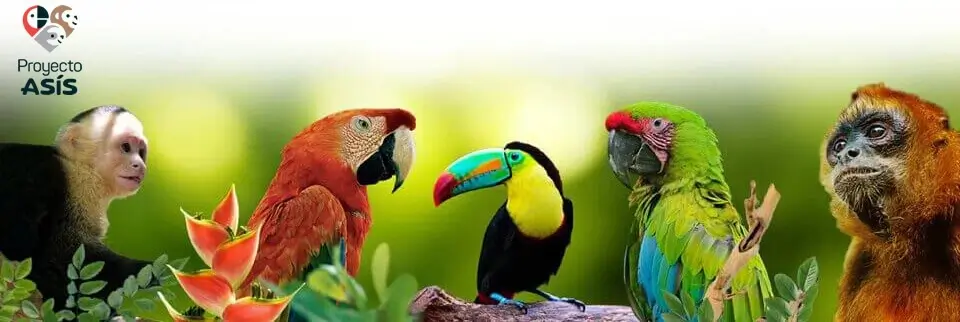Collared Aracari (Pteroglossus torquatus): A Colorful Guardian of the Rainforest
The Collared Aracari (Pteroglossus torquatus) is nature’s living jewel – a vibrant, social toucan that paints the rainforest canopy with splashes of emerald, crimson, and sunshine yellow. This charismatic bird plays a crucial ecological role while captivating birdwatchers across Central and South America. Our ultimate guide explores every facet of this remarkable species.
Other Common Names & Taxonomy
- Scientific Name: Pteroglossus torquatus
- English Names: Collared Aracari, Banded Aracari
- Spanish Names: Tucancillo collarejo (Mexico), Arasarí acollarado (South America)
- Family: Ramphastidae (Toucans)
- Genus: Pteroglossus (Aracaris)
- First Described: By Linnaeus in 1766
Anatomical Characteristics: A Masterpiece of Evolution
Size & Structure
- Length: 35-45 cm (14-18 in)
- Weight: 150-250g (5-9 oz)
- Wingspan: 45-50 cm (18-20 in)
Signature Features
- Beak: Serrated, pale green with colorful markings (lighter than other toucans)
- Plumage:
- Jet black head and back
- Bright yellow-orange chest
- Distinctive black “collar”
- Crimson rump patch
- Greenish-yellow belly
- Eyes: Surrounded by bright blue facial skin
- Feet: Zygodactyl (two toes forward, two backward)
Geographical Distribution: Where to Find Them
Native Range
- Central America: Southern Mexico through Panama
- South America: Pacific coast of Colombia and Ecuador, Amazon Basin
Preferred Habitats
- Lowland tropical rainforests (0-1,200m elevation)
- Forest edges and secondary growth
- Occasionally plantations with remaining tall trees
Hotspot Locations:
- Corcovado National Park, Costa Rica
- Soberanía National Park, Panama
- Yasuní National Park, Ecuador
Biology and Ecology: Life in the Canopy
Diet & Feeding Habits
- Primary Foods:
- Fruits (85% of diet): Figs, palms, heliconias
- Animal matter (15%): Insects, eggs, small vertebrates
- Unique Behavior:
- Tosses fruit in air to catch in beak
- May follow monkey troops to catch disturbed insects
Social Structure
- Lives in small flocks of 6-12 birds
- Communal roosting in tree cavities
- Complex vocalizations including rattles and yelps
Ecological Role
- Important seed disperser for >50 plant species
- Prey for forest eagles and large snakes
- Indicator species for forest health
Reproductive Cycle: Family Life
Breeding Season
- Varies by region: Typically March-June
- Correlates with peak fruit availability
Nesting Habits
- Uses natural tree cavities or old woodpecker holes
- No nesting material added
- Prefers trees like Ceiba or Ficus
Parenting
- Clutch size: 2-4 glossy white eggs
- Incubation: 16-18 days (both parents)
- Fledging: 40-45 days
- Juveniles remain with parents up to 1 year
Population Trend & Conservation Status
Current Status
- IUCN Red List: Least Concern
- Population Estimate: 500,000-5,000,000 individuals
- Trend: Decreasing (20-29% over 3 generations)
Major Threats
- Habitat Loss
- Deforestation for agriculture
- Urban expansion
- Palm oil plantations
- Climate Change Impacts
- Altered fruiting seasons
- Increased extreme weather
- Human Activities
- Illegal pet trade
- Hunting for food in some regions
- Collisions with vehicles/power lines
Conservation Efforts
Protected Areas
- Present in 50+ national parks across range
- Key reserves:
- La Selva Biological Station, Costa Rica
- Darien National Park, Panama
- Manu National Park, Peru
How You Can Help
- Support rainforest conservation organizations
- Choose sustainable, bird-friendly products
- Practice responsible ecotourism
- Report illegal wildlife trade
Why This Species Matters
The Collared Aracari serves as both an ecological cornerstone and a charismatic ambassador for Neotropical conservation. While currently widespread, its dependence on intact forests makes it vulnerable to ongoing habitat destruction. By protecting this species, we safeguard entire ecosystems.
Have you encountered these magnificent birds? Share your experiences in the comments!




















































You must be logged in to post a comment.